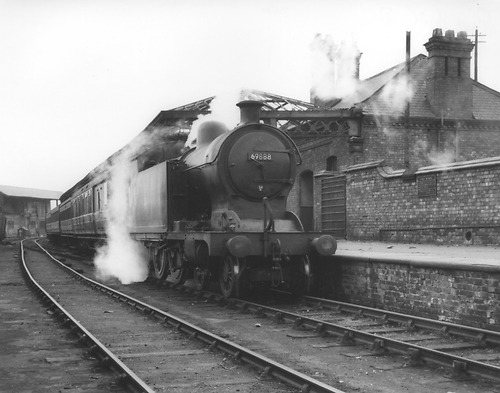 Hartlepool Sports & Leisure
Hartlepool Sports & Leisure
- Cinemas, Theatres & Dance Halls
- Musicians & Bands
- At the Seaside
- Parks & Gardens
- Caravans & Camping
- Sport
 Hartlepool Transport
Hartlepool Transport
- Airfields & Aircraft
- Railways
- Buses & Commercial Vehicles
- Cars & Motorbikes
- The Ferry
- Horse drawn vehicles
 A Potted History Of Hartlepool
A Potted History Of Hartlepool
- Unidentified images
- Sources of information
- Archaeology & Ancient History
- Local Government
- Printed Notices & Papers
- Aerial Photographs
- Events, Visitors & VIPs
 Hartlepool Trade & Industry
Hartlepool Trade & Industry
- Trade Fairs
- Local businesses
- Iron & Steel
- Shops & Shopping
- Fishing industry
- Farming & Rural Landscape
- Pubs, Clubs & Hotels
 Hartlepool Health & Education
Hartlepool Health & Education
- Schools & Colleges
- Hospitals & Workhouses
- Public Health & Utilities
- Ambulance Service
- Police Services
- Fire Services
 Hartlepool People
Hartlepool People
 Hartlepool Places
Hartlepool Places
 Hartlepool at War
Hartlepool at War
 Hartlepool Ships & Shipping
Hartlepool Ships & Shipping

Steam train,school special,at old Hartlepool Station
What we know about this image :
The Class A8 steam locomotive No.69888, pulling passenger coaches, waits at Hartlepool Station (Headland). This engine was built at Darlington in 1934 and withdrawn from service in May 1960.
This is probably a 'School Special' from Easington, Horden and Blackhall carrying children attended Henry Smith School.
Donor : Hartlepool Library Service
Location
Related items :
 Stations and Signal Boxes
Stations and Signal Boxes
Most of these images are of Hartlepool (prior to 1967 West Hartlepool) Station.
'OLD' HARTLEPOOL STATION. The first Hartlepool station was opened around 1840 and according to Robert Wood's book 'West Hartlepool' p.24, appears to have been part of a Dutch ship brought onto land. The cabins housed the Booking Clerk and Station Master. The first proper station building was located at the junction of Commercial Street and Bond Street. It can be seen on old maps as a curved building, to the north of the fish quay, and is often labelled as a Goods' Shed. The later station opened to the west of this in Northgate in November 1878. It was also at this time that a new direct line to West Hartlepool opened. There had been an earlier line which crossed the Slake over sluice gates but this was cut to make an entrance to the Coal Dock. For many years after WW2, Hartlepool Station passenger service was solely for school trains from the colliery towns which carried Henry Smith School pupils. It was closed in 1964 after the 1963 Beeching Act, which resulted in the closure of the Easington, Horden and Blackhall Stations. Children from then onwards were brought into the town by bus.
WEST HARTLEPOOL STATION. West Hartlepool's first station was at the end of the line from Stockton in Middleton. Trains then halted at Stranton station, which was in Mainsforth Terrace close to Burbank Street. The next station built was opposite the old Custom House which is in Victoria Terrace, now part of Hartlepool Marina area. Next a large station, called the Leeds Northern Station, was opened in 1853 in Mainsforth Terrace and photographs of this station can be seen below. It was not until 1878 that a new connecting line meant that trains ran again between Hartlepool and West Hartlepool.
Finally the present station was opened in 1880 in Church Street and the Mainsforth Terrace station was for many years a goods' station.
West Hartlepool station became Hartlepool station in 1967 when Hartlepool and West amalgamated.
SEATON CAREW STATION. The current Seaton Carew station has been on the same site since the mid-1800s.
GREATHAM STATION. This station came after Seaton Carew on the line south. It was well away from the centre of the village and was adjacent to the Cerebos factory. For many years it was very well used as a simple route from town for Cerebos' workers. It closed in 1991.
HART STATION This station was at the north end of the town.It was at what is now the Hartlepool end of the Hart to Haswell country walk.
More detail » old Hartlepool
old Hartlepool
Old Hartlepool is the original fishing village which existed before West Hartlepool. The origins of ancient town of Hartlepool (Old Hartlepool) can be traced back to ca 647 AD. In the 8th century AD, Bede mentions it (“heopru” – the place where harts (deer) drink). The record goes blank then, and does not reappear until the 12th century. In 1201 King John confirmed a charter owned by Robert Bruce V. The name “Brus” or “Bruce” is still associated with parts of the town.
The fine abbey church of St. Hilda is mainly Early English, dating from 1185, on the site of an abbey which flourished as early as 658 AD. St. Hilda’s still flourishes and stands in a prominent place on the Hartlepool headland, and nearby the ancient town walls (completed ca 1322 as a defence against the twin enemies of the Scots and the sea) can still be seen.
On 8th February 1201, the town was granted its first royal charter by King John. A second royal charter was granted in 1593 by Queen Elizabeth (the First).
Hartlepool was visited several times by John Wesley on his preaching tours … he was certainly in the town in 1757 and 1786.
Old Hartlepool continued its independent existence until 1967, when local government reorganisation created the merger with its young neighbour, West Hartlepool.
More detail »




